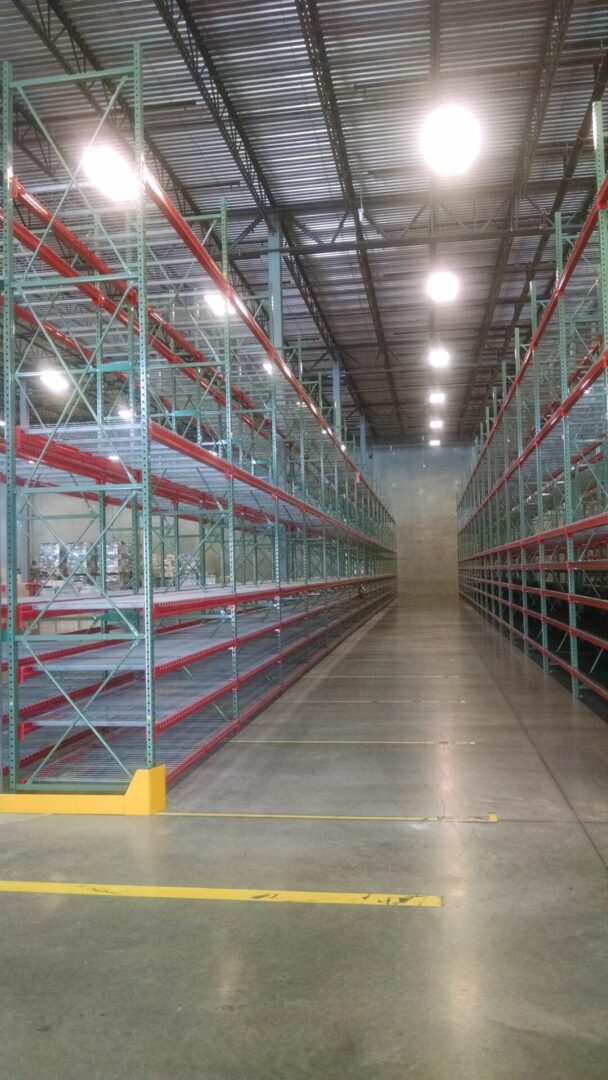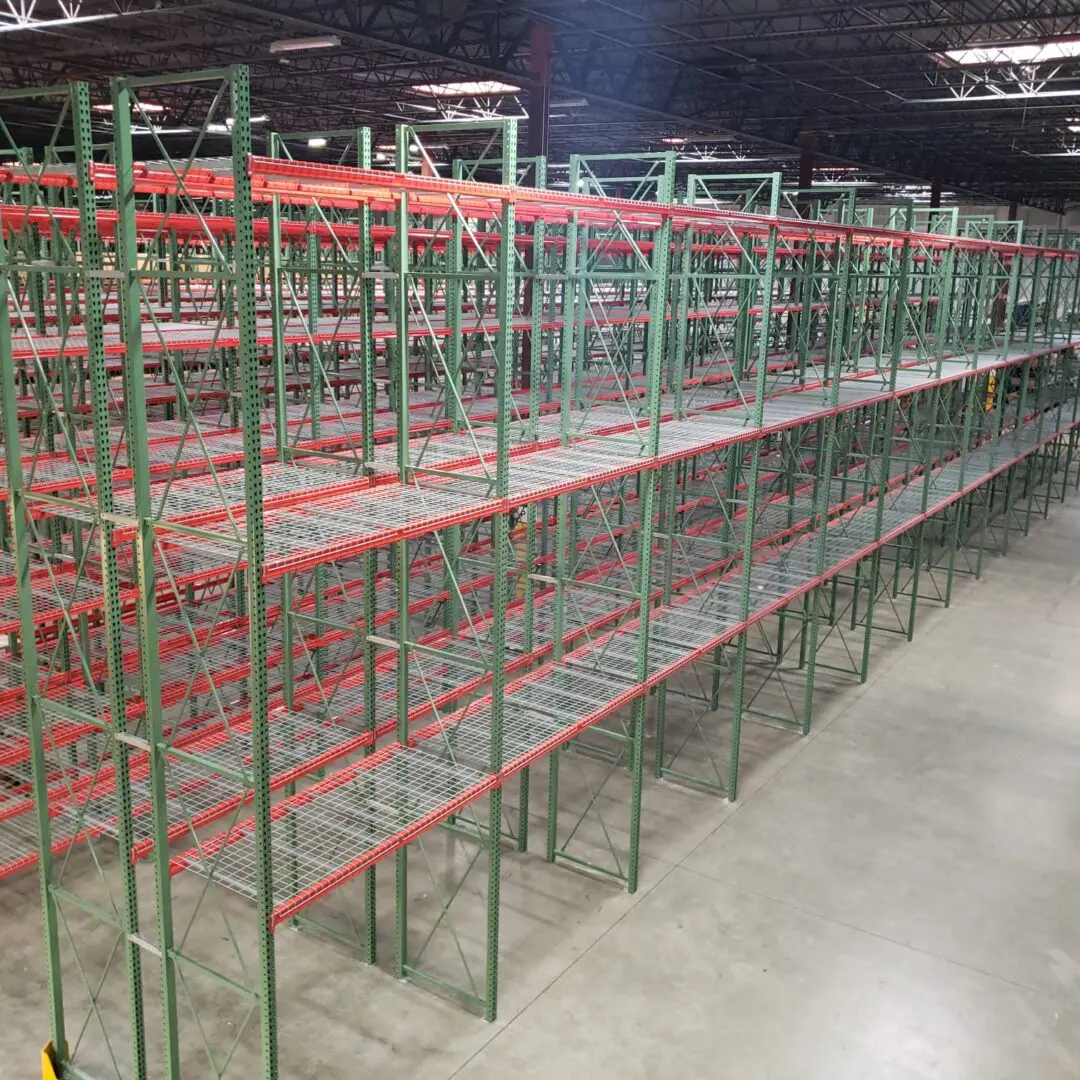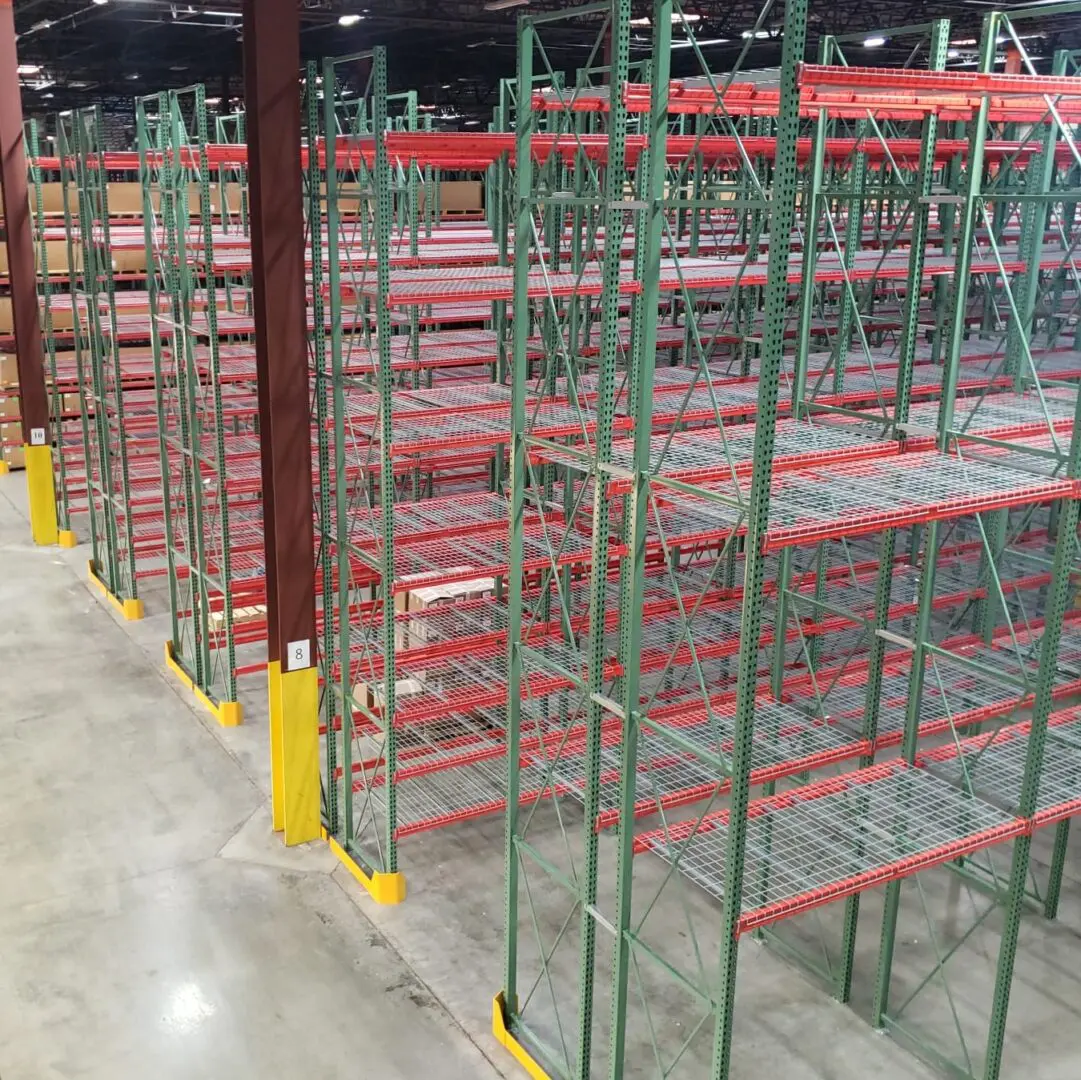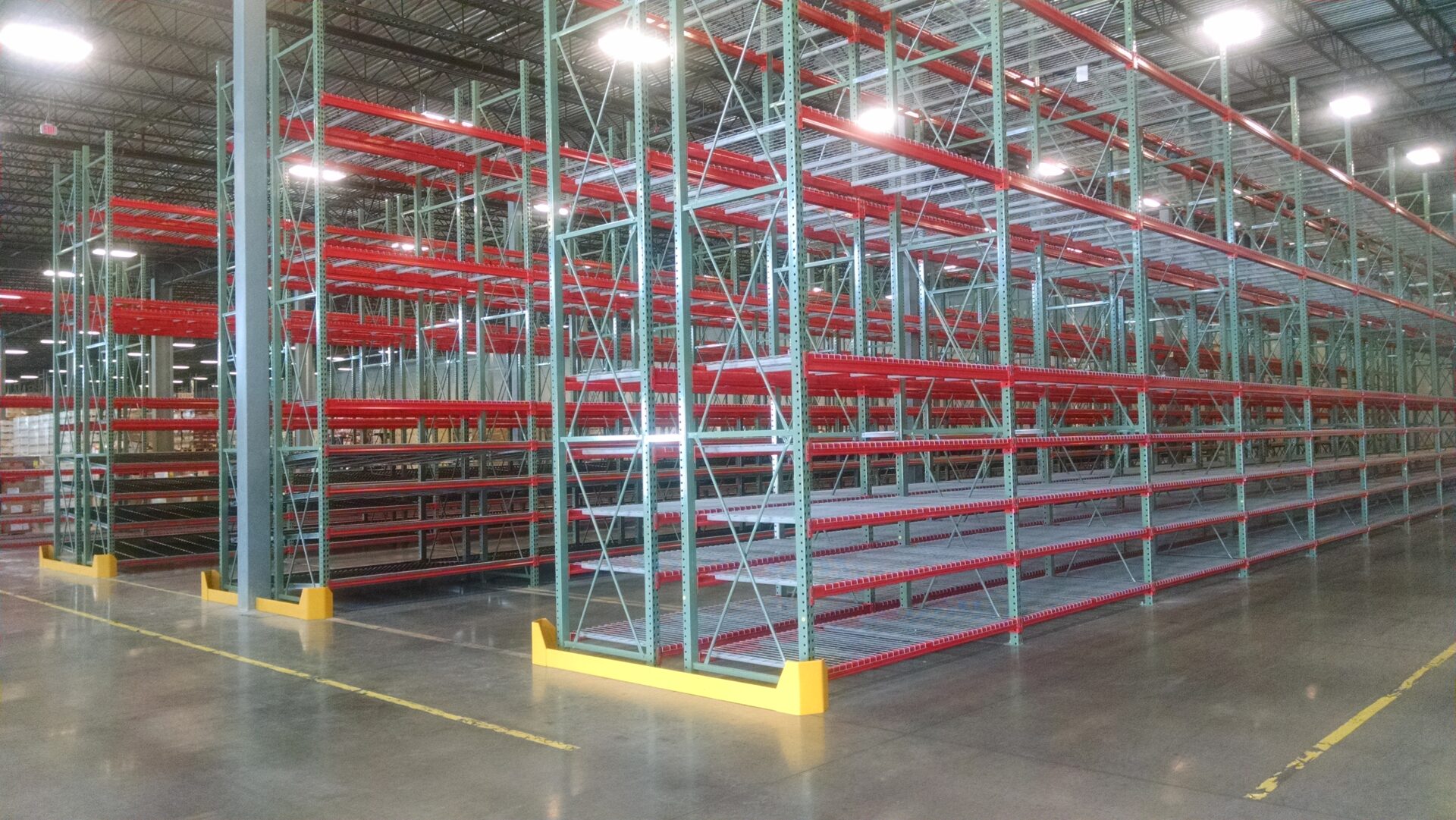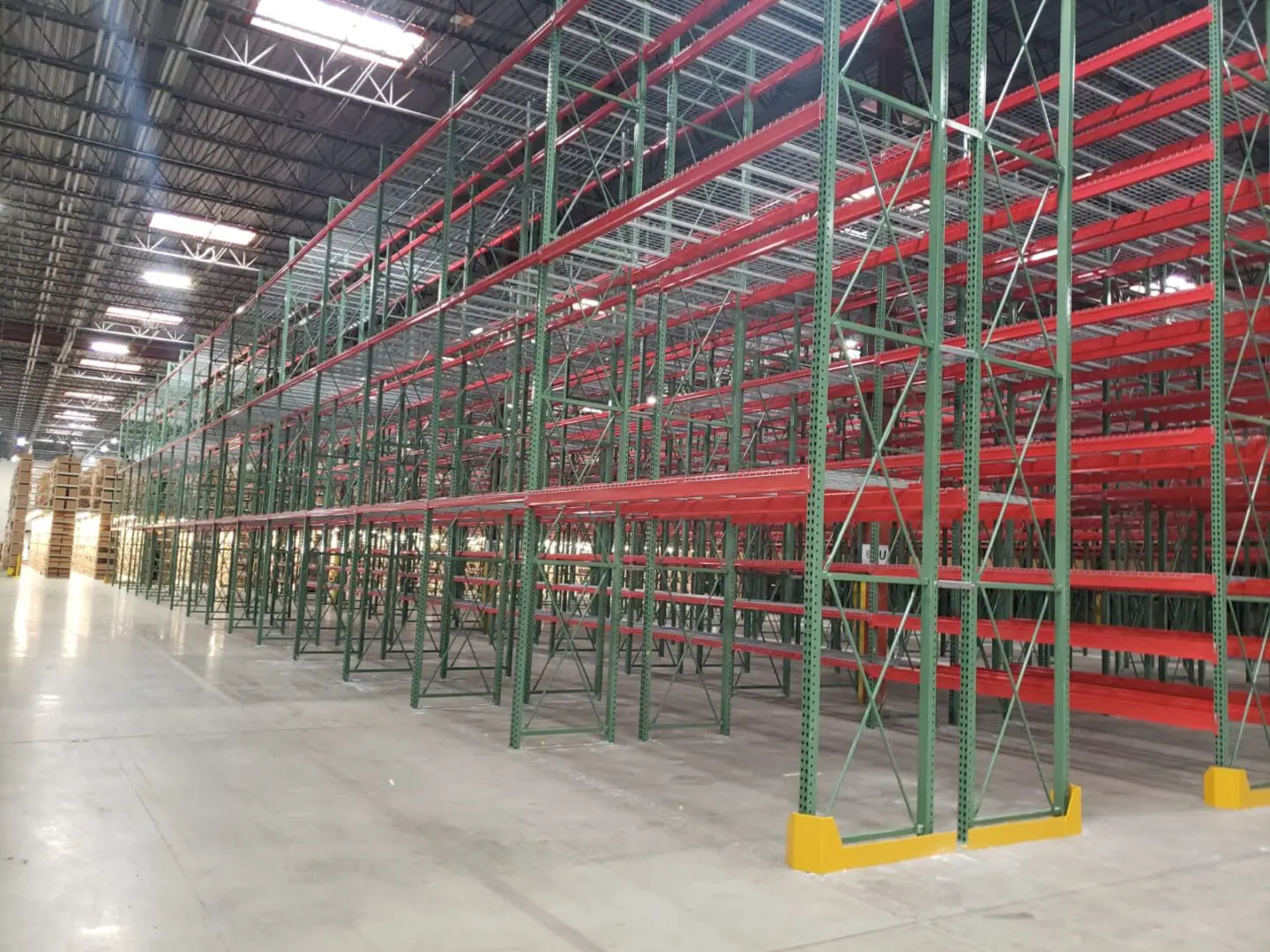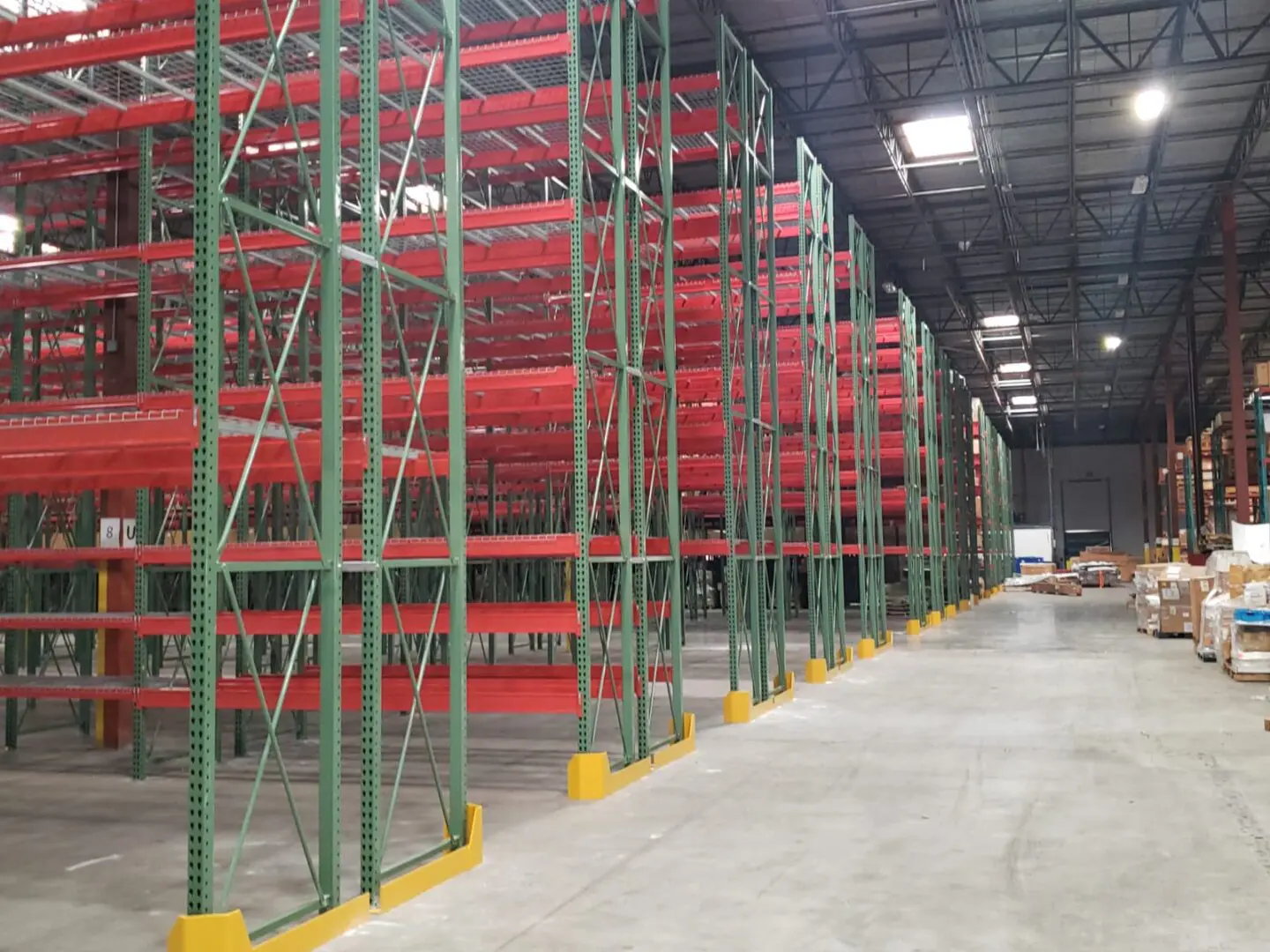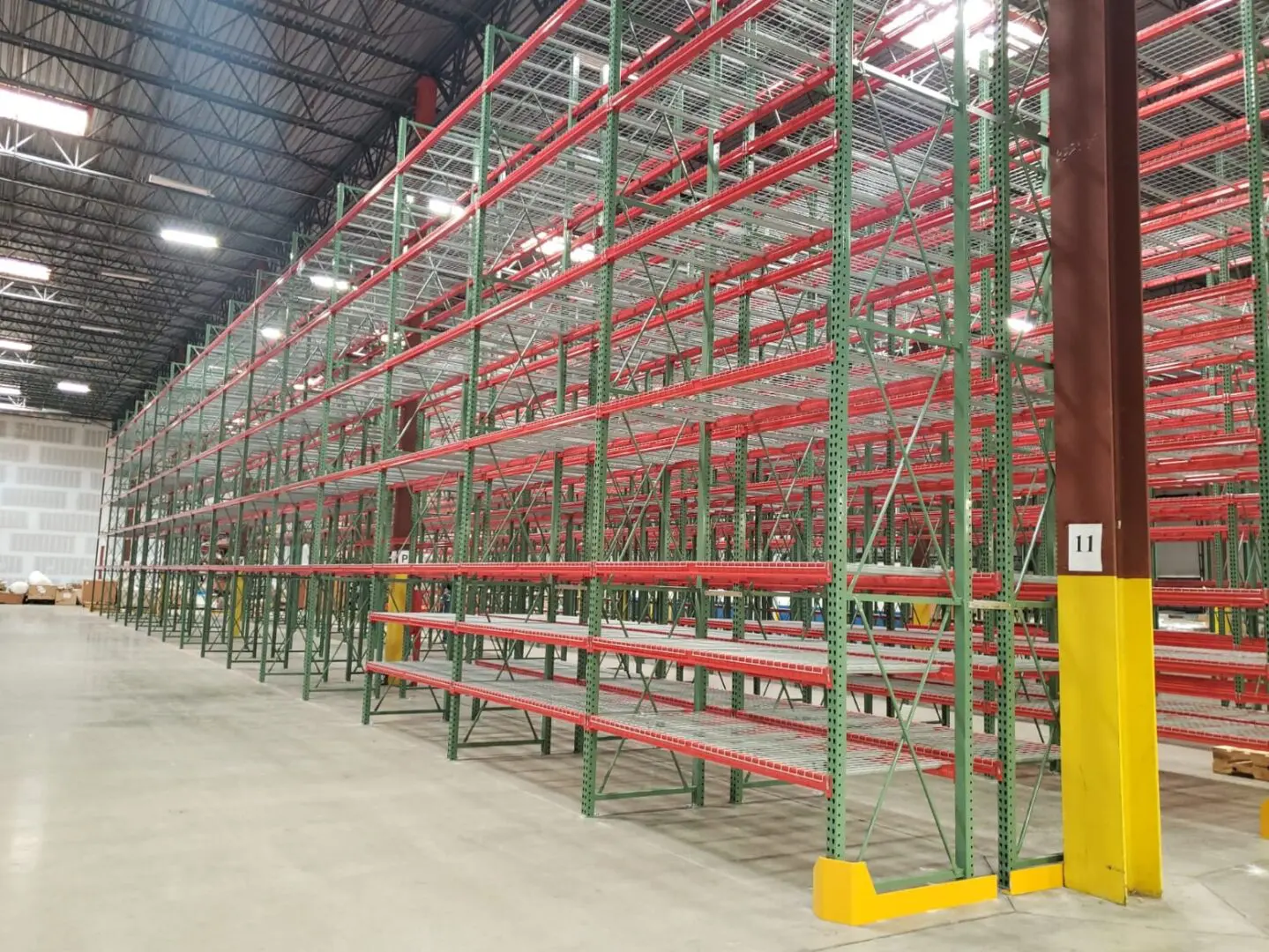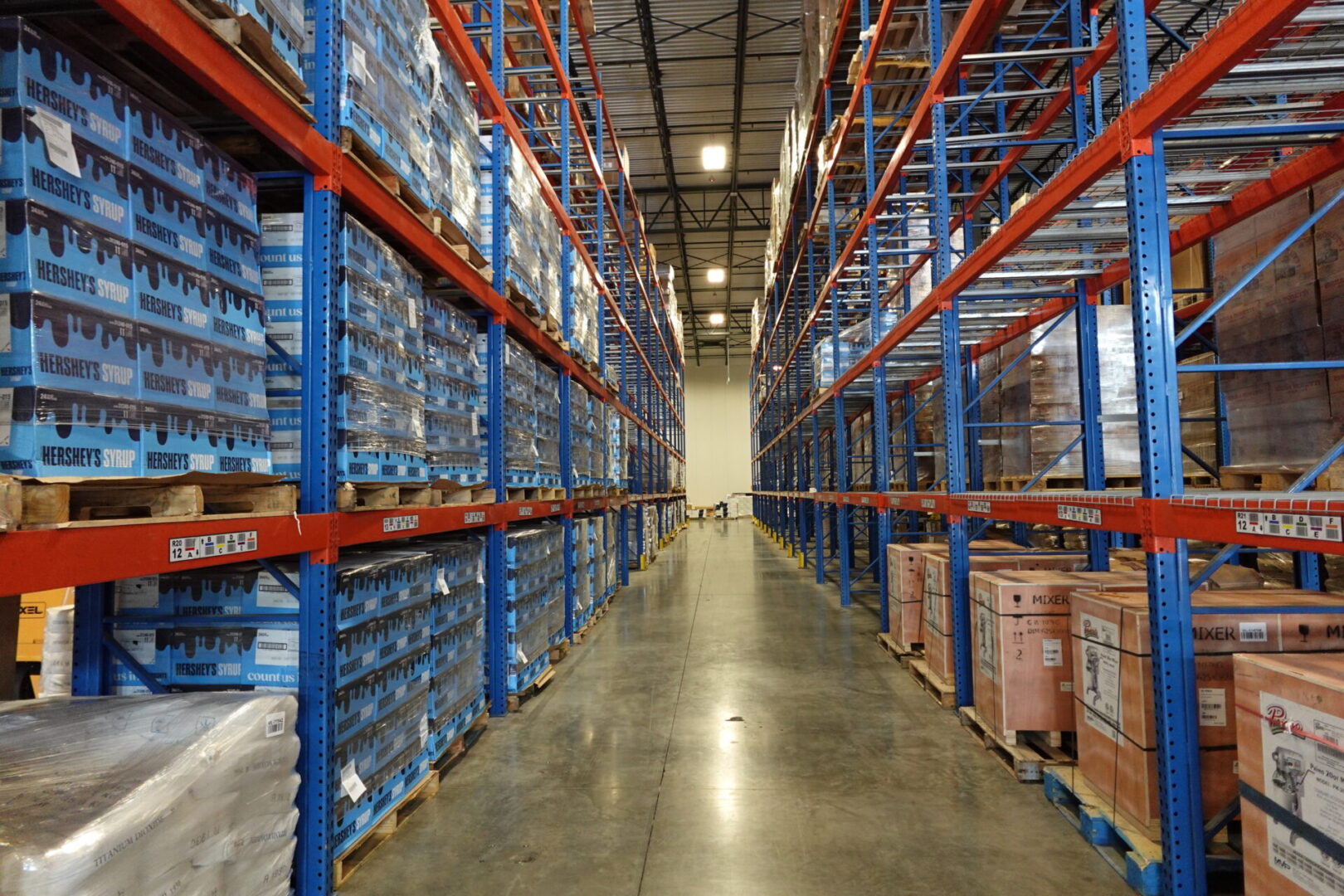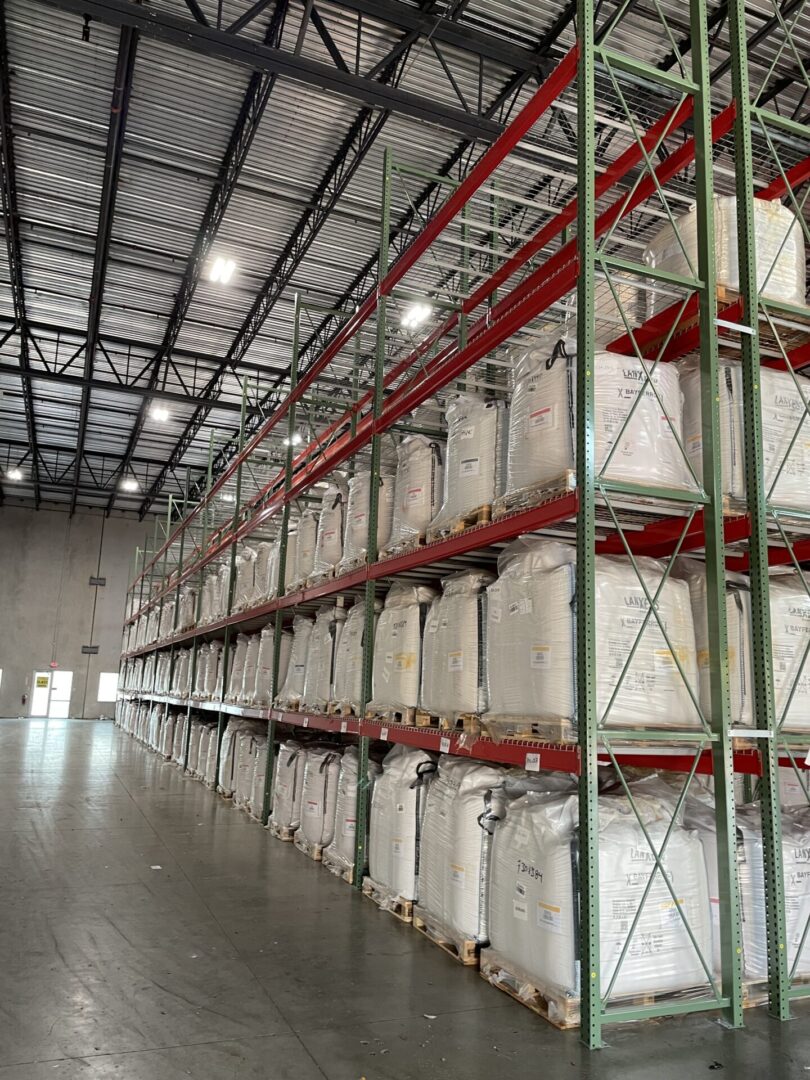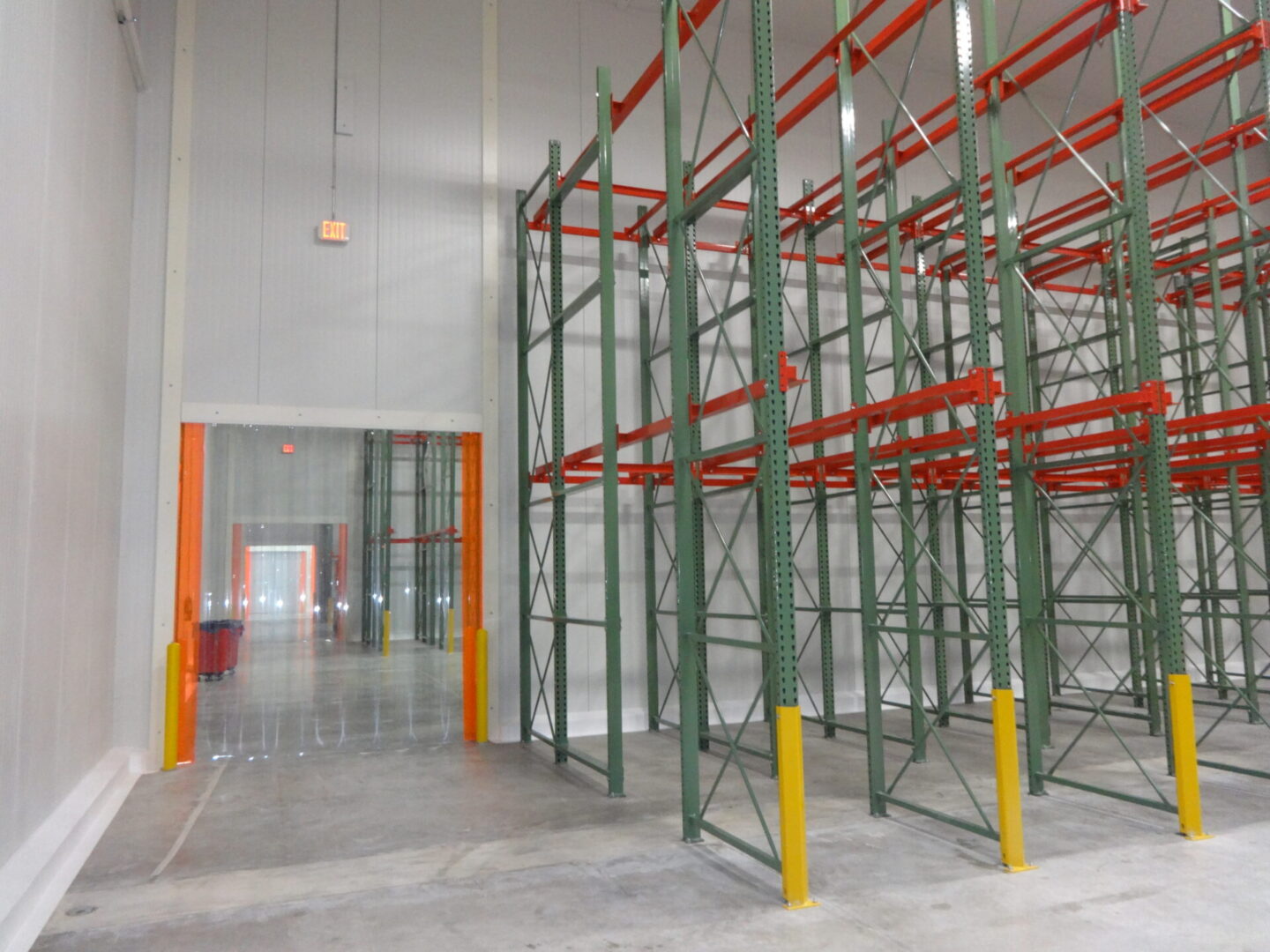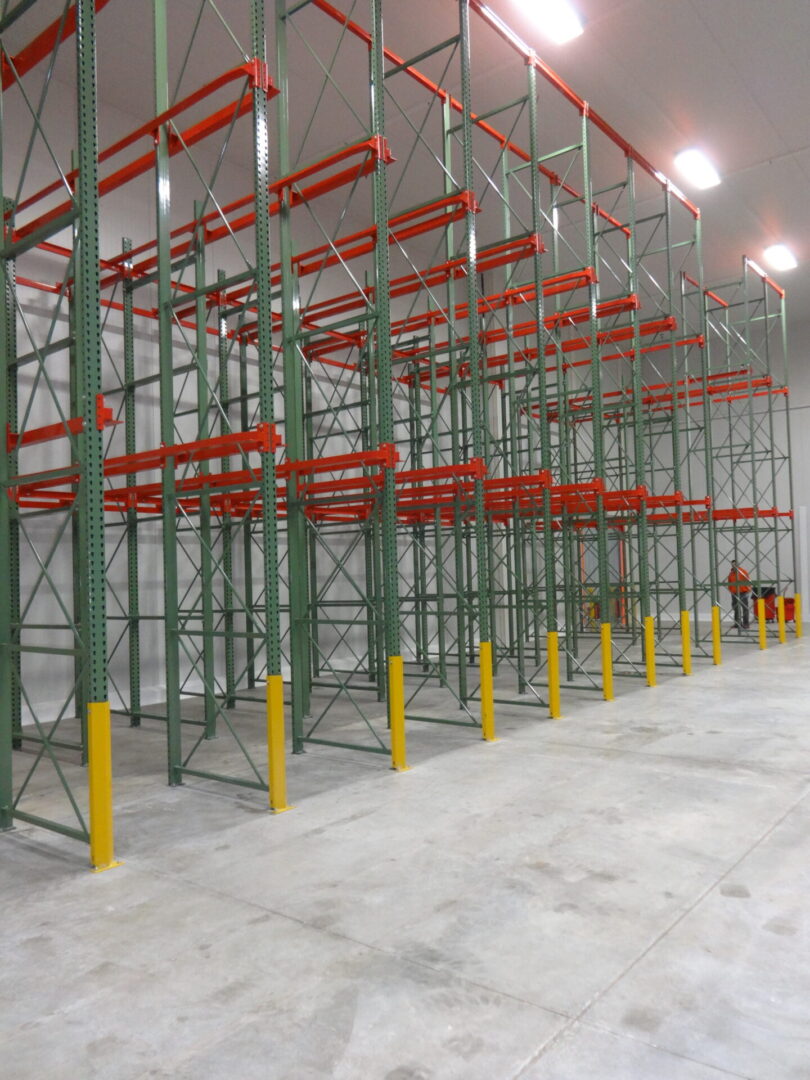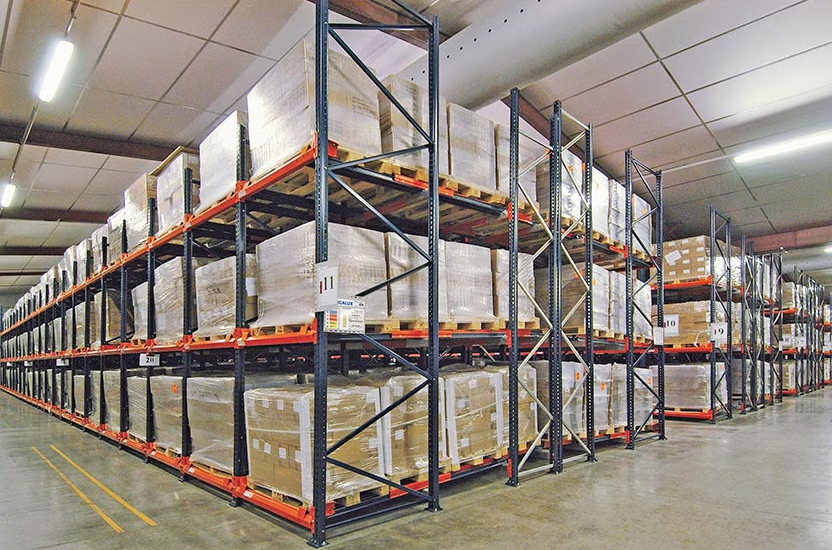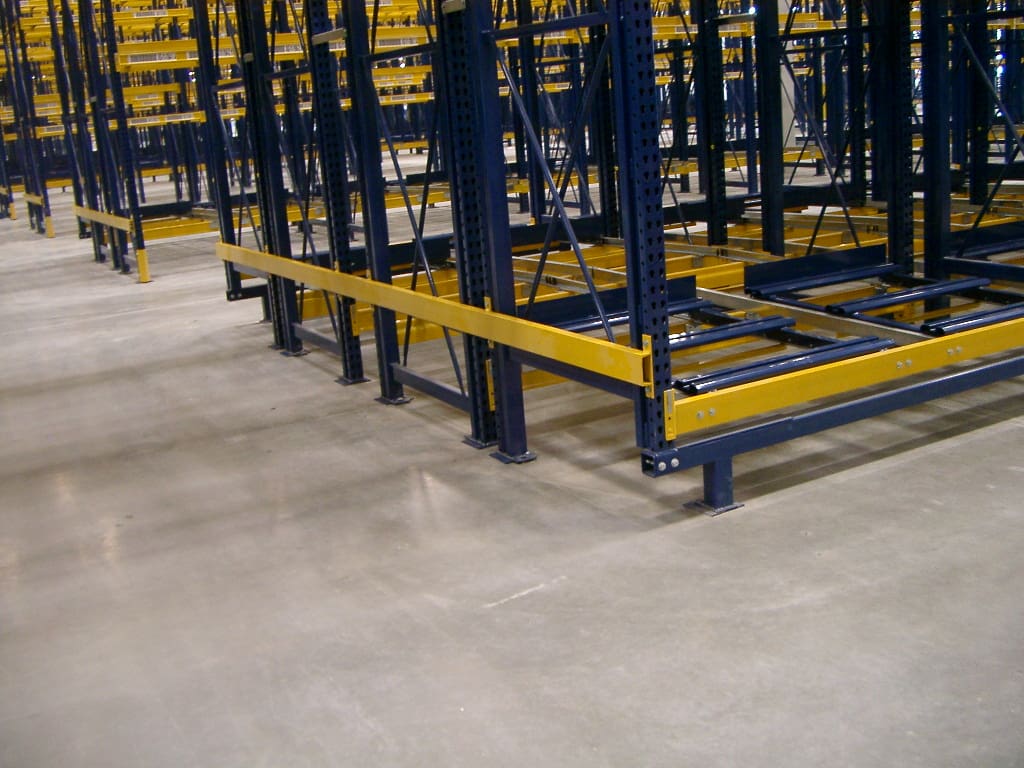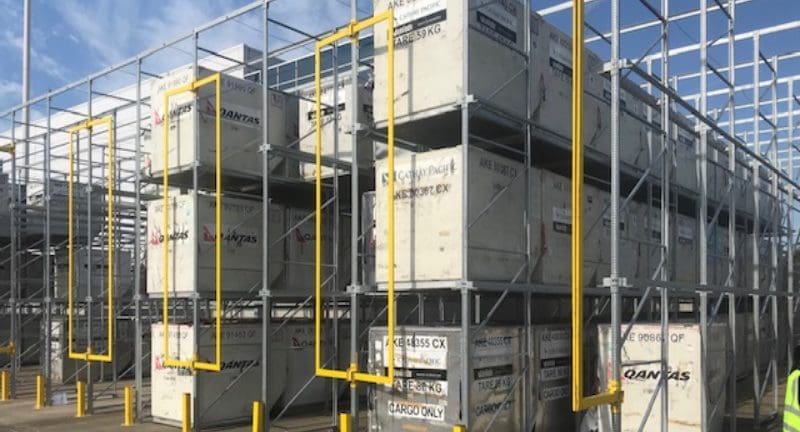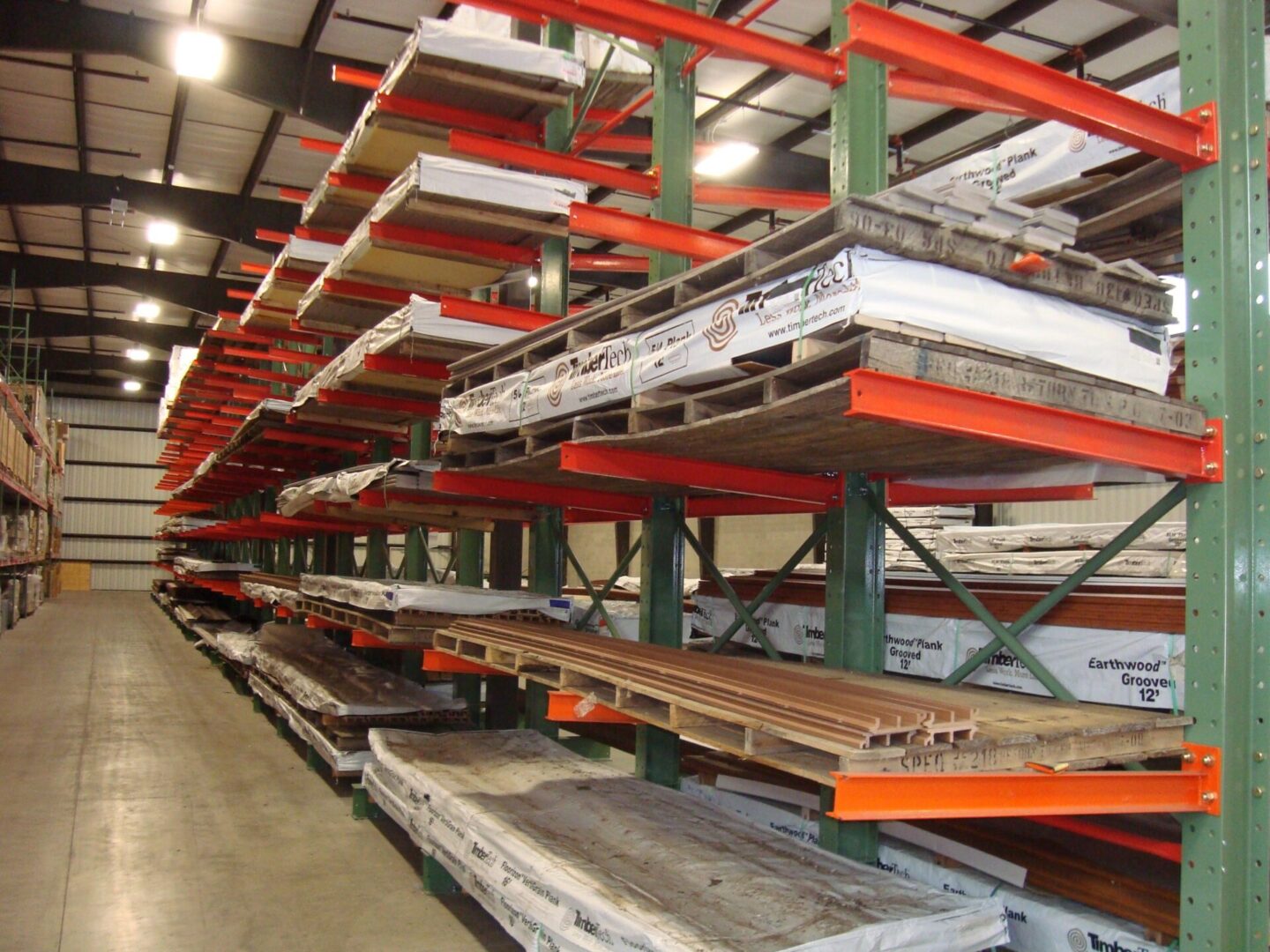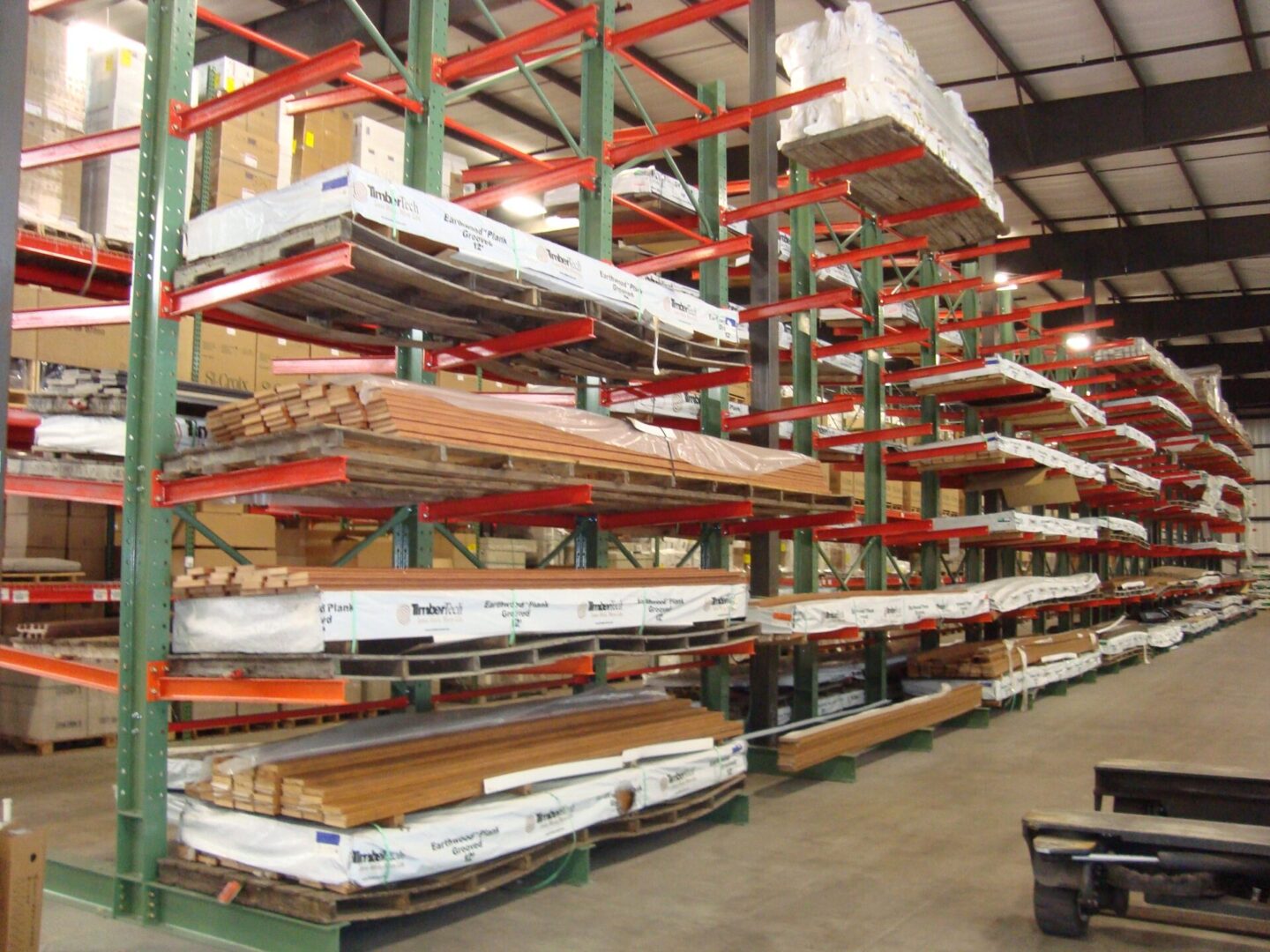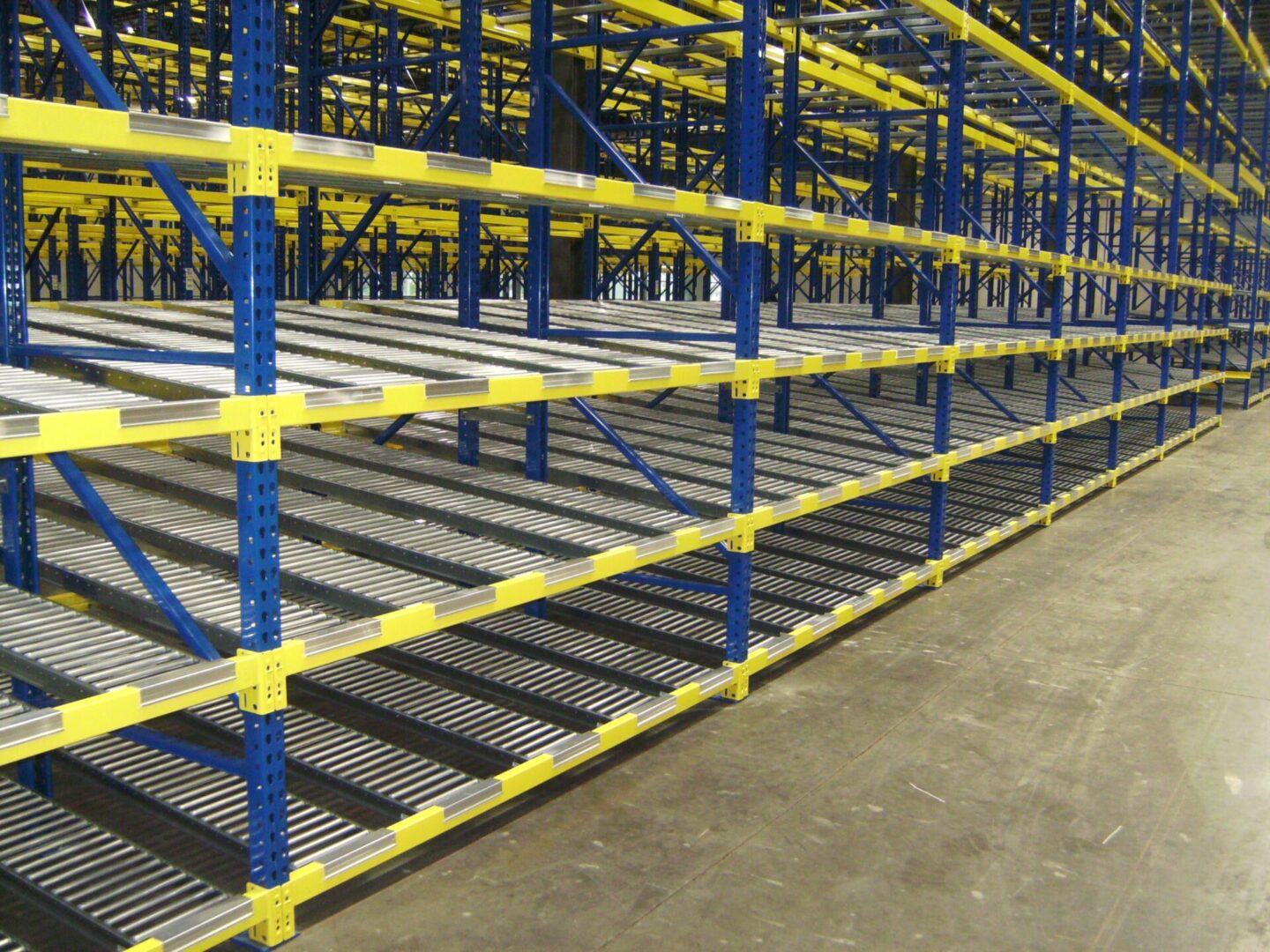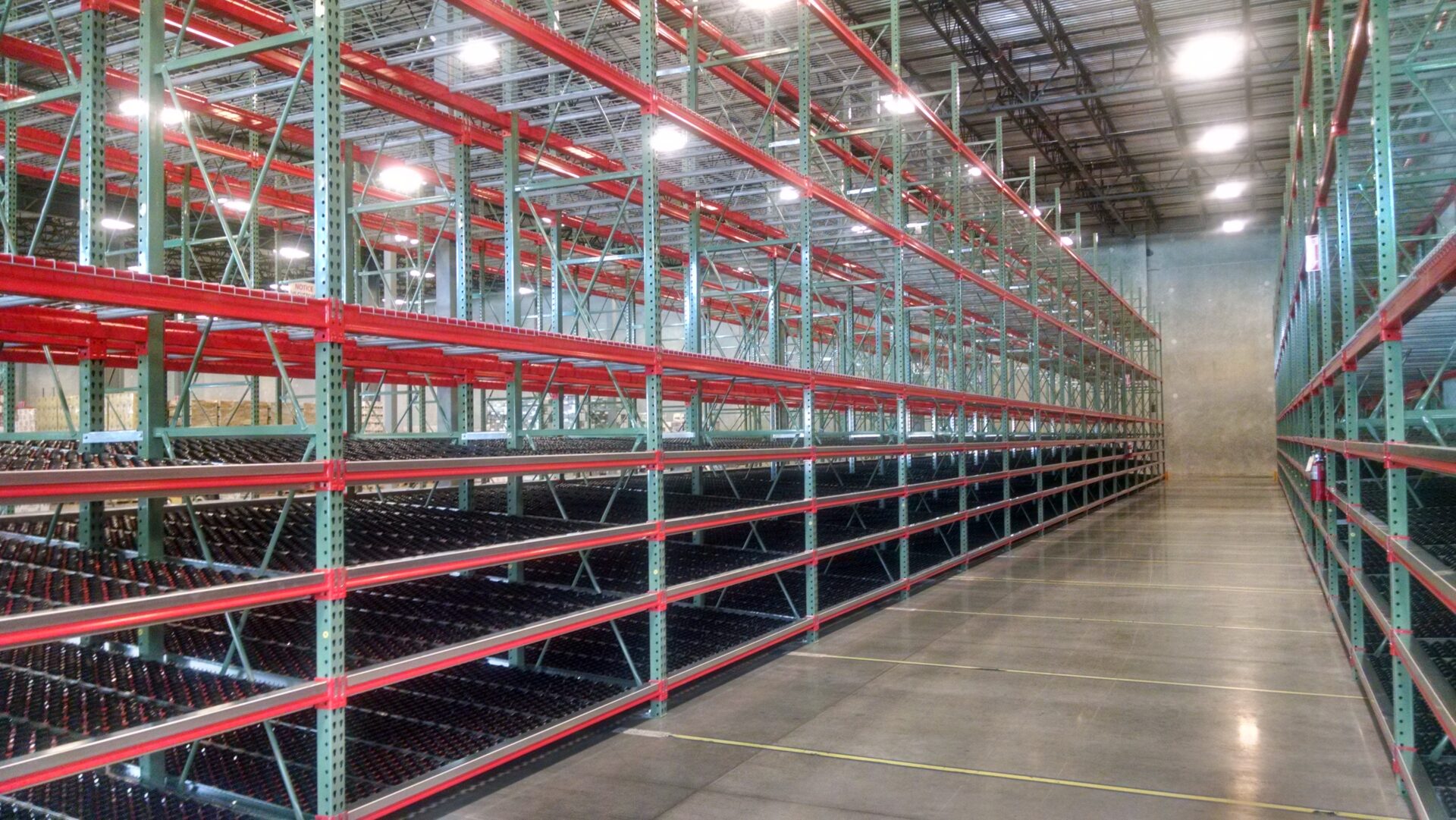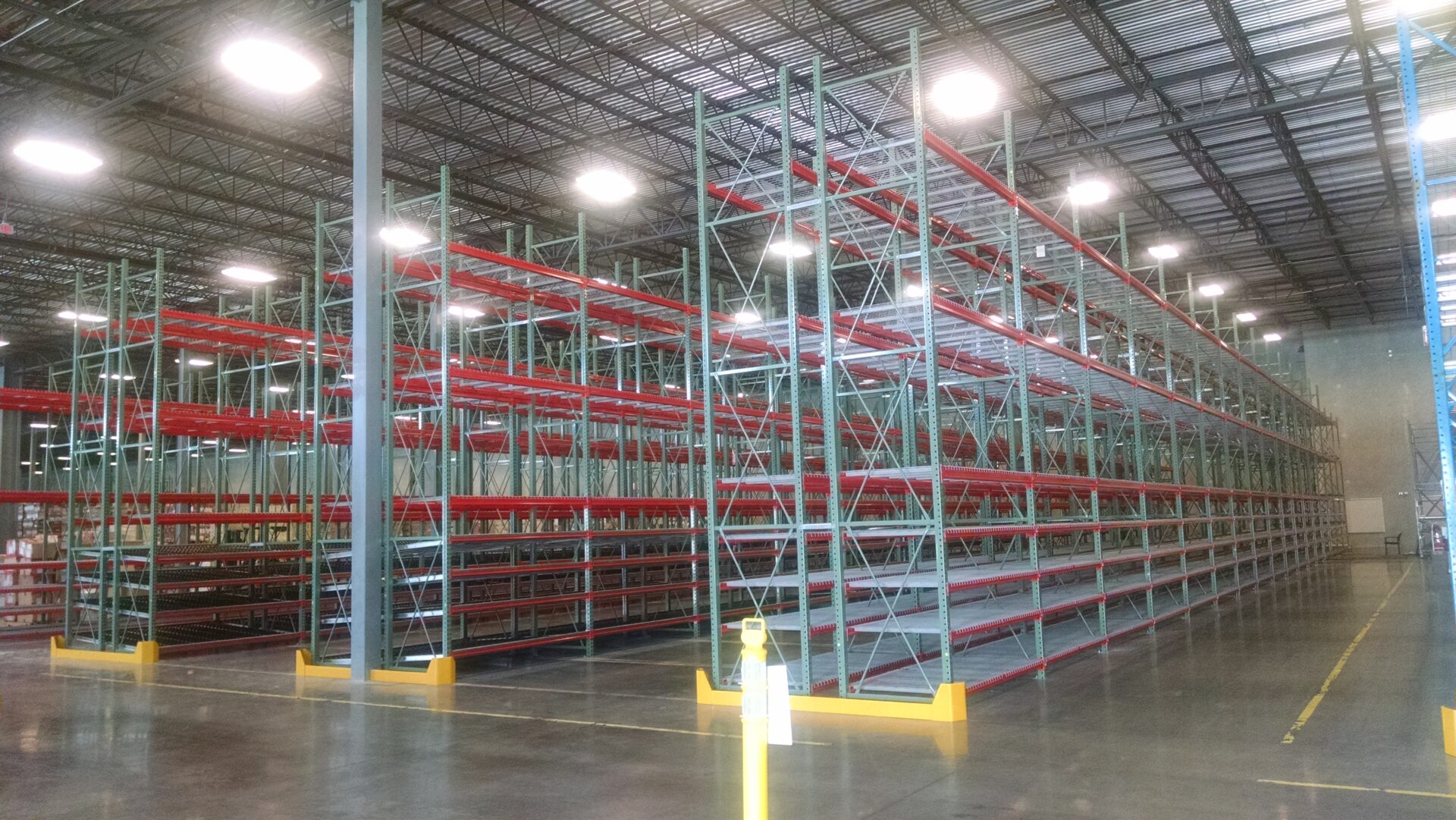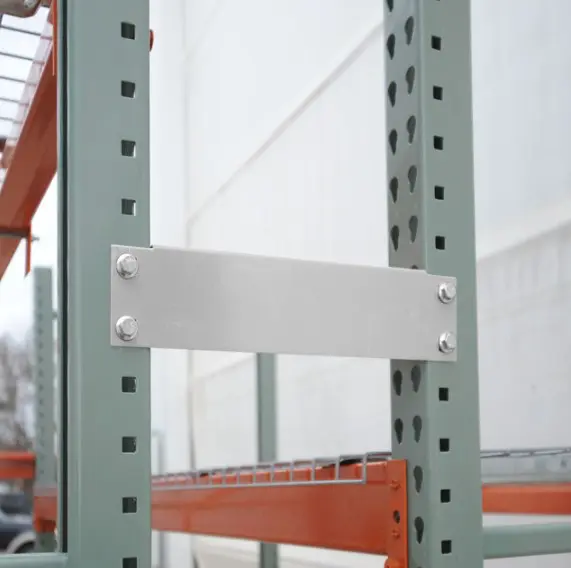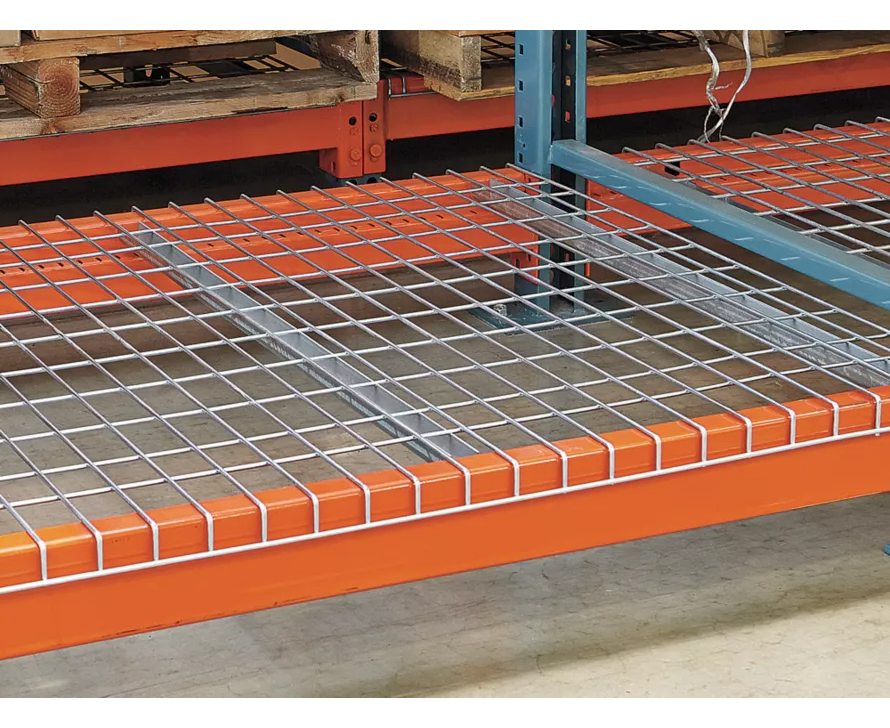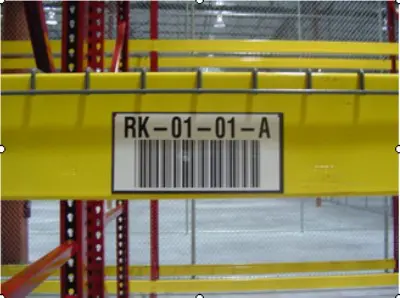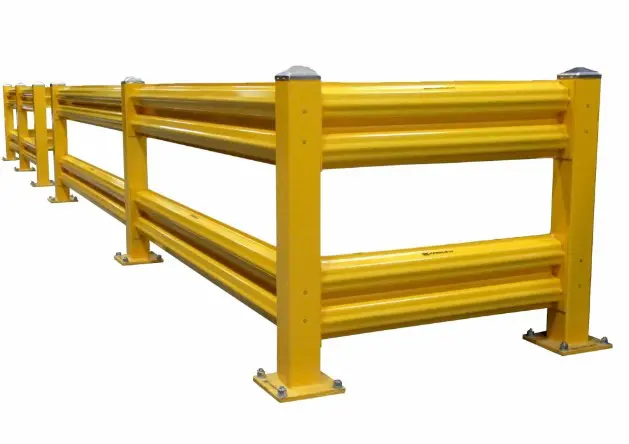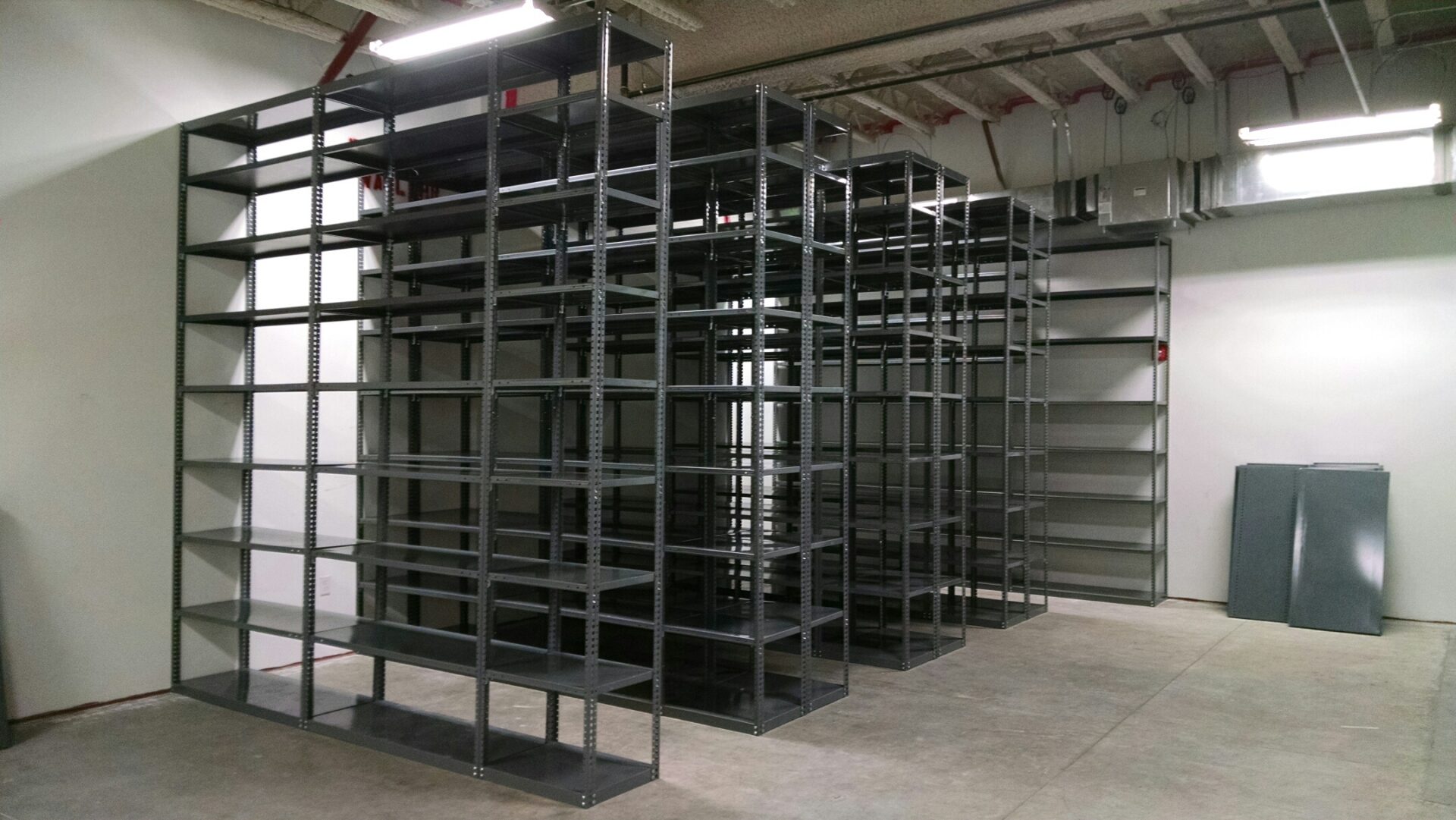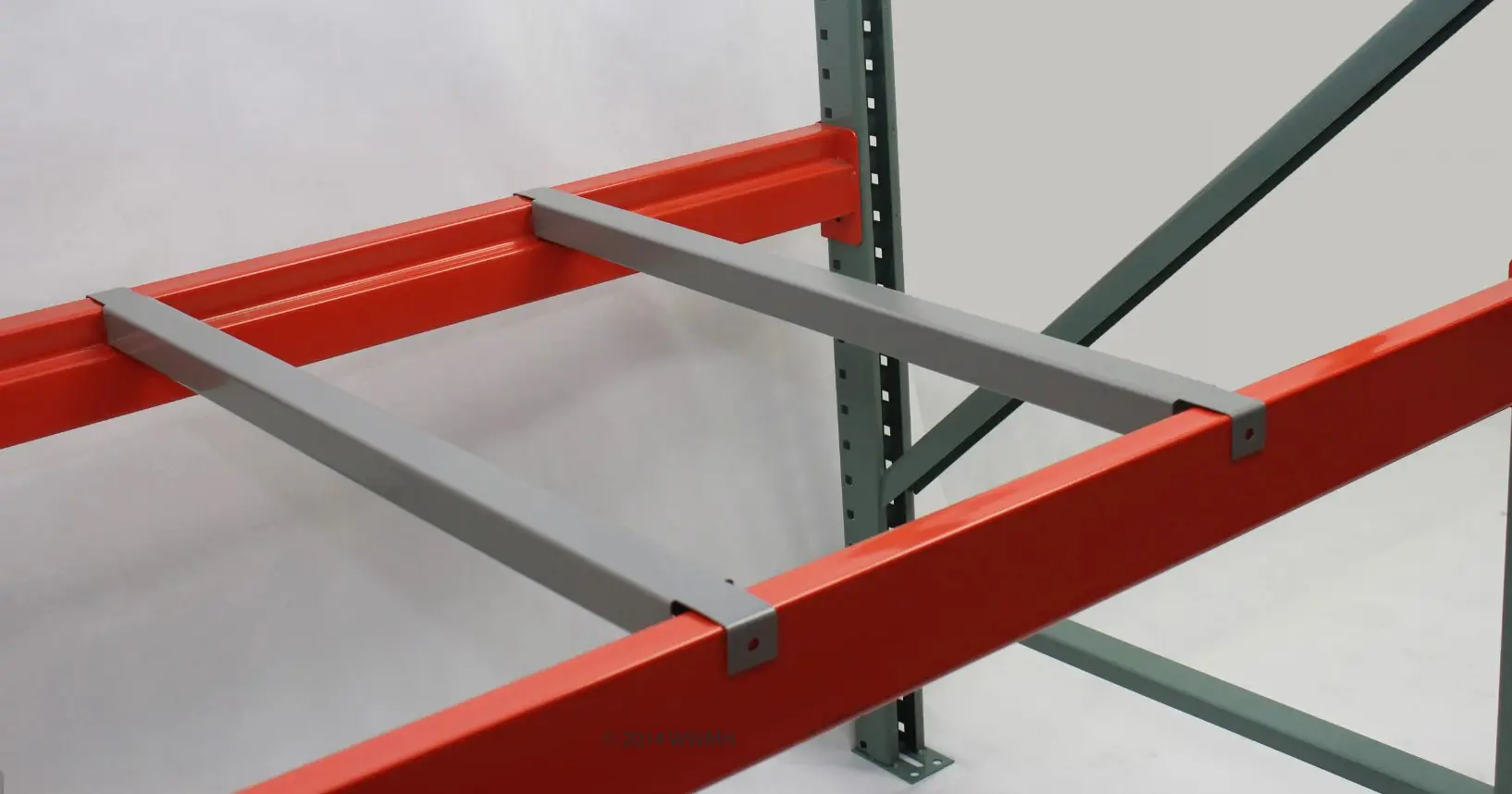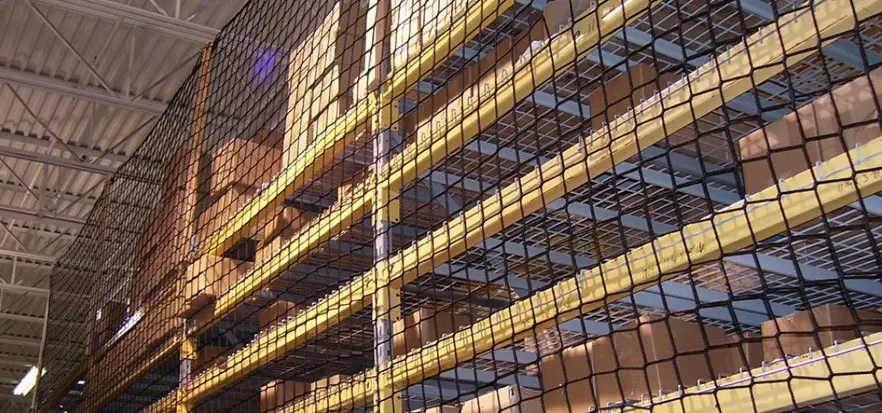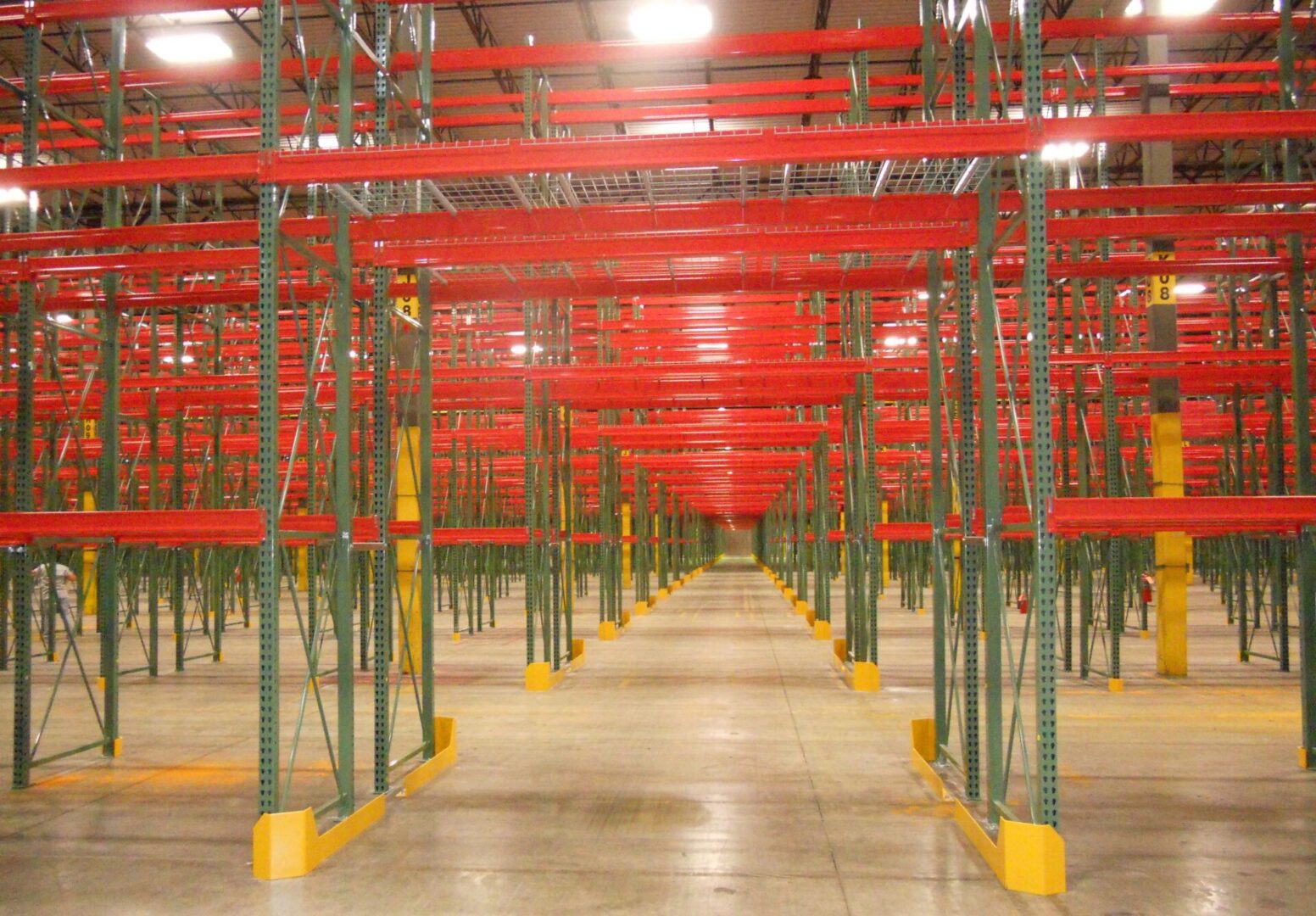
Pallet Racking Systems in Miami, FL
Pallet racking systems are integral to the efficiency of warehouses, distribution centers, and storage facilities. Pallet racking systems allow warehouses to increase their storage capacity by using the vertical space in the warehouse and maximizing profitability for businesses.
From static racks to dynamic pallet storage, our systems are designed to meet the capacity and access requirements of your inventory volume, processes, and business goals. Our pallet racking systems are built to be durable, featuring heavy-duty beams and racking upright frames engineered for performance and reliability in the toughest warehouse conditions. This rock-solid construction ensures that your pallet loads—whether heavy machinery or delicate items—maintain integrity, safeguard workers, and protect infrastructure.
Comprehensive Pallet Racking Solutions
From static racks to dynamic pallet storage, our systems are designed to meet the capacity and access requirements of your inventory volume, processes, and business goals. Our pallet racking systems are built to be durable, featuring heavy-duty beams and racking upright frames engineered for performance and reliability in the toughest warehouse conditions. This rock-solid construction ensures that your pallet loads—whether heavy machinery or delicate items—maintain integrity, safeguard workers, and protect infrastructure.
Racking
Alpine Systems Associates represents Speedrack Products Group, which uses tubular steel for their uprights, increasing torsional resistance over 200 times compared to an open-shaped design. Selective Rack is built with rolled steel tubular components and is composed of three basic products: load beams, upright trusses, and row spacers. Selective Rack systems are used in every industry but are most common in warehousing, distribution storage systems, and food storage or clean room applications.
Selective
Racking
Selective rack is a type of storage system commonly used in warehouses and distribution centers. It is designed to store palletized goods in a way that allows direct access to each pallet, making it a versatile and widely used racking solution. Each pallet can be accessed directly without needing to move other pallets, making it easy to load and unload goods. The racking system can be easily adjusted to accommodate different pallet sizes and heights, offering flexibility in storage and being simple and economical to install and maintain compared to other types of racking systems.
Selective rack, also known as selective pallet racking, is a type of storage system commonly used in warehouses and distribution centers. It is designed to store palletized goods in a way that allows direct access to each pallet, making it a versatile and widely used racking solution. Here are the key features and components of selective racking systems:
Key Features
-
Direct Access: Each pallet can be accessed directly without needing to move other pallets, making it easy to load and unload goods.
-
Adjustability: The racking system can be easily adjusted to accommodate different pallet sizes and heights, offering flexibility in storage.
-
Versatility: It is suitable for storing a wide variety of products, making it ideal for industries with diverse inventory needs..
-
Cost-Effective: Relatively simple and economical to install and maintain compared to other types of racking systems.
Components
-
Load Beams: Horizontal supports that hold the pallets. They are adjustable and can be placed at various heights to accommodate different pallet sizes.
-
Upright Trusses: Vertical frames that support the load beams. They are typically made of tubular steel to provide strength and stability.
-
Row Spacers: These components keep rows of racks properly aligned and provide additional stability to the racking system.
-
Floor Anchors and hardware: Floor anchors and hardware are vital for the safe and efficient operation of pallet rack systems. They enhance stability, ensure compliance with safety standards, protect against seismic and impact forces, and contribute to the overall durability and functionality of the storage system.
Applications
Selective racking systems are used in a variety of industries due to their flexibility and efficiency. Common applications include:
-
Warehousing: Ideal for storing goods that need to be easily accessible.
-
Distribution Centers: Efficient for quickly retrieving and dispatching products.
-
Food Storage: Suitable for storing food products, often in conjunction with temperature-controlled environments.
-
Clean Room Applications: Used in environments that require high levels of cleanliness and organization.

Advantages
-
Ease of Access: Facilitates efficient stock rotation and picking operations.
-
Flexibility: Can be reconfigured to meet changing storage needs.
-
Scalability: Easy to expand as storage requirements grow.
-
Compatibility: Works with most types of forklifts and material handling equipment.
Disadvantages
-
Lower Storage Density: Compared to other racking systems like drive-in or push-back racking, selective racking uses more aisle space.
-
Potential for Damage: Pallets stored at floor level can be more susceptible to damage from forklifts and other equipment.
In summary, selective racking is a highly efficient and flexible storage solution that provides easy access to stored goods, making it a popular choice in many industries.
Drive-In
Rack
Drive-in racking is a high-density storage system designed to maximize space utilization in warehouses and distribution centers. It allows for the storage of a large number of pallets in a smaller area by minimizing the number of aisles required. This system is particularly effective for storing homogeneous products in large quantities.
Key Features
-
High-Density Storage: Drive-in racking enables a high storage density by eliminating aisles between racks, which maximizes the use of available space.
-
LIFO System: Operates on a Last-In, First-Out (LIFO) basis, meaning the last pallet loaded is the first one to be removed. This is suitable for products that do not require strict stock rotation.
-
Drive-In and Drive-Through: Drive-in racks have a single entry and exit point for each storage bay, while drive-through racks have entry points on both ends, allowing for a First-In, First-Out (FIFO) system if needed.
Components
-
Upright Frames: Vertical columns that support the structure of the racking system.
-
Rails: Horizontal rails on which pallets are placed, running the depth of the racking system.
-
Braces: Horizontal and diagonal braces that provide stability to the structure.
-
Guide Rails: Installed on the floor to guide forklifts and protect the racking structure from damage.
-
Floor Anchors and Hardware: Floor anchors and hardware are vital for the safe and efficient operation of pallet rack systems. They enhance stability, ensure compliance with safety standards, protect against seismic and impact forces, and contribute to the overall durability and functionality of the storage system.
Advantages
-
Space Efficiency: Maximizes storage capacity by reducing the number of aisles, making it ideal for warehouses with limited space.
-
Cost-Effective: Lower cost per pallet stored compared to other racking systems due to the high density of storage.
-
Flexibility: Can be used for various types of products, particularly those that are not time-sensitive.
-
Scalability: Easy to expand by adding more levels or rows as storage needs grow.
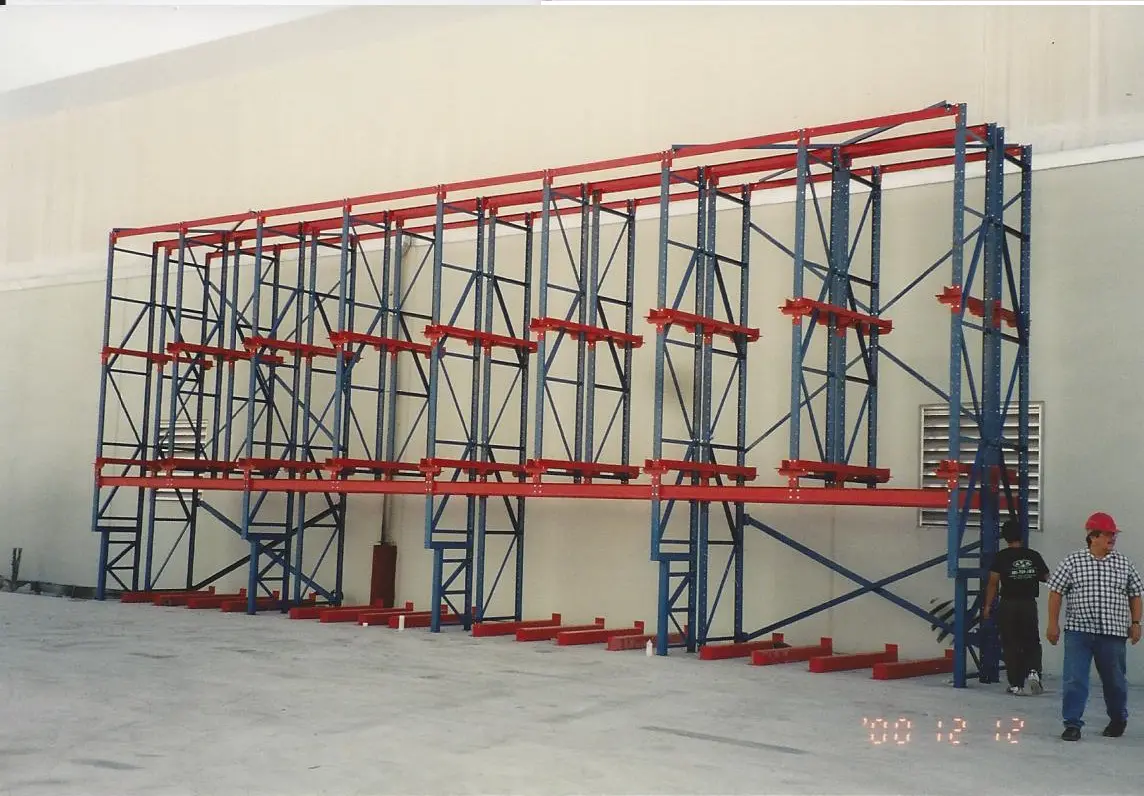
Disadvantages
-
Limited Selectivity: Only the last pallet loaded can be accessed directly, making it less suitable for products that require frequent rotation.
-
Potential for Damage: There is a higher risk of damage to racks and pallets due to the tight spacing and the need for forklifts to drive into the racks.
-
Product Suitability: Best for homogeneous products with longer shelf lives or items that are stored in bulk.
Applications
-
Bulk Storage: Ideal for storing large quantities of similar products, such as in manufacturing or distribution centers.
-
Cold Storage: Widely used in cold storage facilities where maximizing space utilization is critical due to the high cost of refrigerated space.
-
Seasonal Goods: Suitable for storing seasonal products that are moved in large batches.
In summary, drive-in racking is a highly efficient storage solution that maximizes warehouse space by allowing high-density storage of pallets. It is especially beneficial for applications where space is at a premium and where product rotation is less critical.
Push-Back
Rack
Key Features
-
High-Density Storage: Enables the storage of multiple pallets deep, making it ideal for maximizing storage space.
-
LIFO System: Operates on a Last-In, First-Out (LIFO) basis, meaning the last pallet loaded is the first one to be retrieved.
-
Gravity-Driven: Utilizes gravity to move pallets forward when the front pallet is removed, making retrieval easy and efficient.
Components and Structure
-
Racks: The system consists of inclined storage racks that allow for multiple pallets to be stored on each level. The racks are typically designed in a way that supports pallets being pushed back and forth.
-
Carts: Each lane of the push-back rack contains a series of nested carts or trays that sit on inclined rails. These carts can hold pallets and roll forward and backward within the lane.
-
Rails: The inclined rails facilitate the movement of the carts, using gravity to naturally bring pallets forward when the front pallet is removed.
Operation
Loading
-
The first pallet is placed on the top cart.
-
When the second pallet is loaded, it pushes the first pallet back, and the second pallet takes its place at the front.
-
This process continues, with each new pallet pushing the previously loaded ones further back, up to the capacity of the lane (usually up to 6–7 pallets deep).
Unloading
-
When the front pallet is removed, the inclined rails and gravity cause the next pallet to roll forward to the picking position.
-
This process continues until the lane is empty.
Advantages
Space Efficiency
-
Push-back racking allows for high-density storage, making the most of available space by storing pallets multiple deep.
Improved Selectivity
-
Unlike drive-in racks, push-back racking provides greater selectivity because each lane can hold different SKUs, allowing for better access to individual pallets without needing to move others.
Time and Labor Savings
-
Loading and unloading times are reduced because forklifts can load and retrieve pallets from the front of the rack without needing to drive into the racking structure.
Gravity Assistance
-
The inclined design uses gravity to bring pallets forward, which simplifies the retrieval process and minimizes the need for manual handling.
Disadvantages
-
Limited Selectivity: Only the front pallet in each lane is directly accessible, making it less suitable for items that require high selectivity or strict FIFO (First-In, First-Out) stock rotation.
-
Potential for Damage: There is a higher risk of damage to pallets and products due to the movement of carts and the need for precise handling.
-
Complexity: More complex to install and maintain compared to traditional selective racking systems.
Applications
Push back racking is suitable for a variety of industries and applications, particularly where:
-
High-density storage is required.
-
There is a moderate-to-high level of inventory turnover.
-
A diverse range of SKUs need to be stored in an organized manner.
-
Space optimization and efficient pallet access are priorities.
In summary, push-back racking is an effective storage solution that maximizes space utilization, enhances pallet selectivity, and reduces handling times. It’s particularly useful in warehouses where high-density storage and efficient inventory management are essential.
Cantilever
Racking
Cantilever racking is a type of storage system specifically designed to handle long, bulky, or irregularly shaped items that cannot be easily stored on traditional pallet racks. This racking system provides flexibility and accessibility for items such as lumber, pipes, steel bars, furniture, and other materials that require open-front access without obstructions. Here are the key features, components, and advantages of cantilever racking:
Key Features
-
Open Front Design: Allows for the easy storage and retrieval of long items, without front columns to restrict access.
-
Adjustable Arms: The arms can be adjusted to different heights to accommodate various sizes of materials.
-
Heavy-Duty Construction: Built to handle heavy loads, with options for single-sided or double-sided configurations.
Components
-
Base: The foundation of the rack that supports the uprights and the load.
-
Uprights (Columns): Vertical supports that provide the main structural framework.
-
Arms: Horizontal beams extending from the uprights to support the load. These can be adjusted in height.
-
Braces: Horizontal and diagonal braces that connect the uprights and provide stability to the structure.
-
End Stops: Optional components at the end of the arms to prevent items from rolling off.
Advantages
-
Versatility: Ideal for storing long and bulky items that are difficult to fit on standard pallet racks.
-
Accessibility: The open design allows for easy loading and unloading of materials using forklifts or other handling equipment.
-
Adjustability: Arms can be easily adjusted to accommodate different product sizes and weights.
-
Space Efficiency: Maximizes the use of vertical space, freeing up floor space for other uses.
-
Durability: Constructed to handle heavy and oversized loads, ensuring long-term reliability
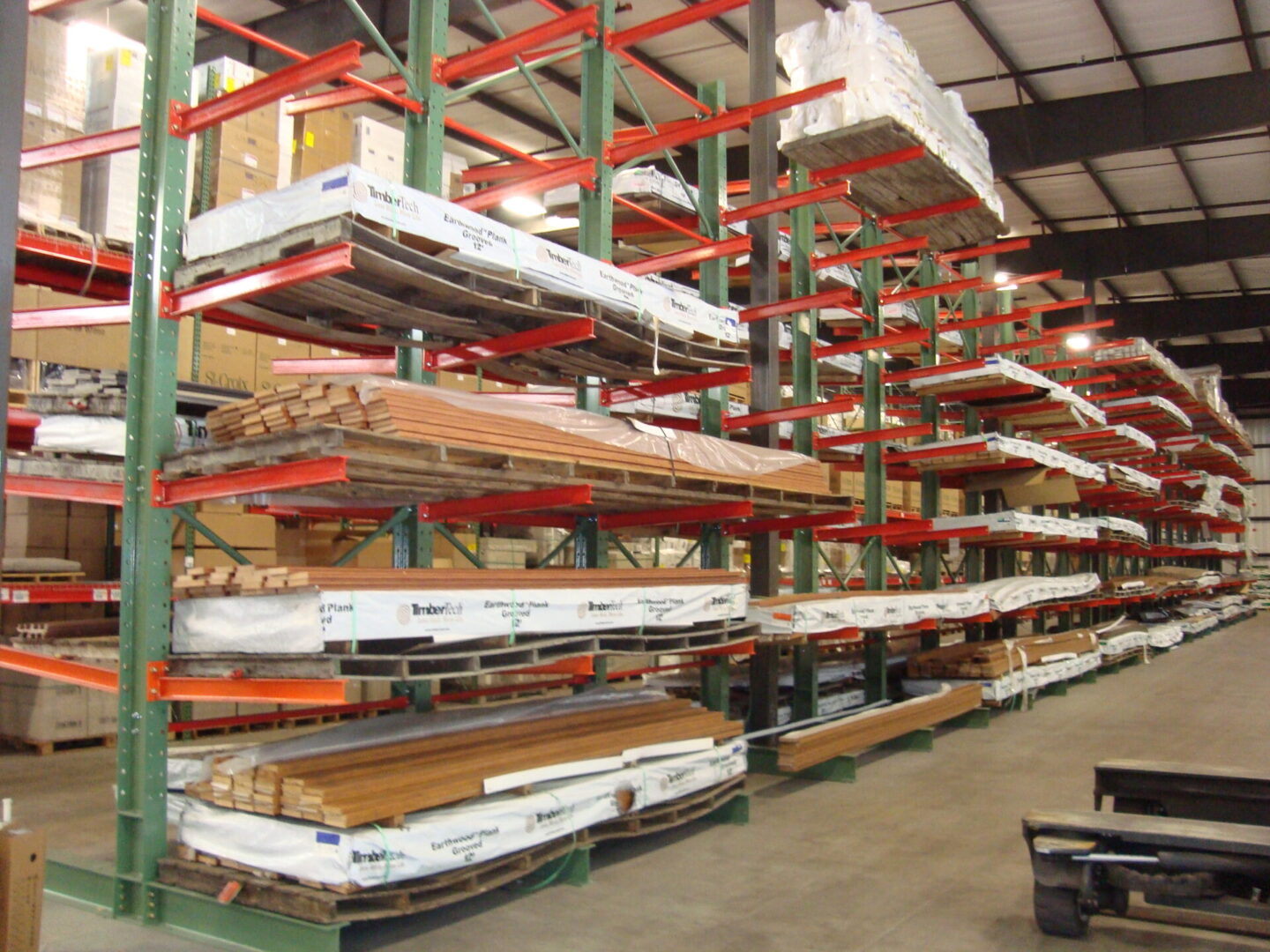
Disadvantages
-
Cost: It can be more expensive than traditional pallet racking systems due to the heavy-duty construction and specialized design.
-
Installation: It may require more complex installation and anchoring to ensure stability, especially for taller racks or heavier loads.
-
Specialized Use: Less versatile for storing standard palletized goods compared to other racking systems.
Applications
-
Lumber Yards: Storing long pieces of wood, plywood, and other building materials.
-
Pipe Storage: Ideal for storing metal, plastic, or PVC pipes of various lengths.
-
Metal Fabrication Shops: Handling long metal bars, rods, and sheets.
-
Furniture Warehouses: Storing items like sofas, mattresses, and other large furniture pieces.
-
Retail and Wholesale: Displaying large items such as carpets, flooring materials, and other bulky goods.
In summary, cantilever racking is an efficient and practical solution for storing long, bulky, and irregularly shaped items. Its design provides easy access and flexibility, making it ideal for industries that deal with oversized materials.
Carton Flow
Racking
Carton flow racking, also known as gravity flow racking, is a storage system designed for efficient inventory management and order picking. It uses a series of inclined tracks or rollers to facilitate the movement of cartons and other light goods from the back of the rack to the front, allowing for First-In, First-Out (FIFO) inventory management. This system is particularly useful in environments where high product turnover and quick order fulfillment are essential. Here are the key features, components, and advantages of carton flow racking:
Key Features
-
FIFO System: Ensures that the oldest inventory is used first, which is crucial for products with expiration dates or shelf-life concerns.
-
Gravity-Driven: Utilizes the force of gravity to move items from the loading end to the picking end, reducing the need for manual handling.
-
High-Density Storage: Maximizes storage space by reducing the need for aisles and enabling deep-lane storage of products.
-
Order Picking Efficiency: Designed to streamline the picking process, making it faster and more efficient for workers.
Components
-
Flow Lanes: Inclined tracks or rollers where cartons or totes are placed. These lanes are set at a slight incline to facilitate movement toward the front of the rack.
-
Upright Frames: Vertical supports that hold the flow lanes in place.
-
Guide Rails: Ensure that cartons or totes stay aligned and move smoothly along the flow lanes.
-
Load Beams: Horizontal supports that connect the upright frames and hold the flow lanes.
-
Brakes and Speed Controllers: Optional components that control the speed of moving cartons, preventing them from moving too quickly and potentially causing damage.
Advantages
-
Increased Productivity: Reduces the time spent by workers on locating and retrieving items, leading to faster order fulfillment.
-
Improved Inventory Management: The FIFO system helps maintain proper stock rotation, reducing the risk of expired or obsolete products.
-
Space Efficiency: Maximizes storage capacity by enabling high-density storage and reducing the need for extensive aisle space.
-
Reduced Labor Costs: The gravity-driven system minimizes manual handling and movement, reducing labor costs and the risk of injury.
-
Versatility: Suitable for a wide range of products, particularly in industries with high product turnover, such as food and beverage, pharmaceuticals, and retail.
Disadvantages
-
Initial Cost: It can be more expensive to install compared to traditional static shelving due to the need for specialized tracks and rollers.
-
Maintenance: Requires regular maintenance to ensure tracks and rollers are functioning correctly and to prevent jams or blockages.
-
Limited Load Capacity: Best suited for light to medium-weight items, as very heavy items can cause excessive wear on the rollers and tracks.
Applications
-
Order Picking: Ideal for environments where quick and accurate order picking is essential, such as e-commerce fulfillment centers.
-
Inventory Management: Used in settings where inventory needs to be rotated efficiently, such as in the food and beverage industry.
-
Parts Storage: Effective in manufacturing environments for storing and accessing small parts and components used in assembly processes.
How It Works
-
Loading: Cartons or totes are loaded into the back of the inclined flow lanes. The incline causes them to move forward under the force of gravity.
-
Picking: Workers pick items from the front of the flow lanes, ensuring that the oldest inventory is picked first (FIFO).
-
Replenishment: As items are picked from the front, new inventory can be continuously loaded from the back, keeping the system stocked and ready for order fulfillment.
In summary, carton flow racking is an efficient and effective storage solution for managing high-turnover inventory and improving order-picking processes. Its gravity-driven FIFO design maximizes space utilization and productivity, making it a valuable addition to warehouses and distribution centers.
Rack
Accessories
Pallet rack accessories are various components and add-ons designed to enhance the functionality, safety, and efficiency of pallet racking systems. These accessories can help customize racking solutions to meet specific storage needs, improve load management, and protect both products and racking infrastructure. Here are some common pallet rack accessories and their uses:
Common Pallet Rack Accessories
Wire Decking
-
Description: Mesh-like panels that fit between the load beams of the racking.
-
Uses: Provides a stable surface for storing pallets and smaller items; improves safety by preventing items from falling through; and enhances visibility and air circulation.
Pallet Support Bars
-
Description: Bars that span the distance between load beams.
-
Uses: Provides additional support for pallets, especially those that are undersized or non-standard, and helps distribute weight more evenly.
Column Protectors (Post Protectors)
-
Description: Guards are installed at the base of upright columns.
-
Uses: Protects the racking columns from forklift impacts and other types of damage, extending the life of the racking system.
Row Spacers
-
Description: Metal spacers that connect two rows of back-to-back racking.
-
Uses: Keeps rows aligned and provides additional stability to the racking system.
Safety Bars (Cross Bars)
-
Description: Bars that run across the depth of the rack, connecting the front and back beams.
-
Uses: Adds additional support and prevents pallets from accidentally falling through the racking.
Backstops (Pallet Stops)
-
Description: Bars or panels installed at the back of the racking.
-
Uses: Prevents pallets from being pushed off the back of the racking.
Aisle Guards
-
Description: Barriers are installed along the aisles.
-
Uses: Protects the racking from damage caused by forklifts and other material handling equipment.
Shelving Panels
-
Description: Solid panels that fit between beams.
-
Uses: Provides a solid surface for storing smaller items or non-palletized goods.
Beam Ties
-
Description: Connectors that link load beams together.
-
Uses: Adds strength and stability to the racking system, ensuring beams stay in place under load.
Load Stops
-
Description: Devices installed on the beams to prevent pallets from being pushed too far.
-
Uses: Ensures that pallets are positioned correctly on the rack, preventing overhang and potential accidents.
Label Holders
-
Description: Clips or holders that attach to the beams or uprights.
-
Uses: Facilitates easy labeling and identification of products and locations, improving organization and inventory management.
Safety Netting
-
Description: Netting is installed on the sides or back of the racking.
-
Uses: Prevents items from falling off the racks, enhancing safety for workers.
Canti Backstop Arms
-
Description: Arms that extend from the back of the racking.
-
Uses: Prevents items from being pushed off the back of the rack, similar to backstops.
Dividers
-
Description: Vertical separators that fit into the racking.
-
Uses: Keeps stored items organized and prevents them from mixing; especially useful for storing long or irregularly shaped items.
Anti-Collapse Mesh
-
Description: Wire mesh panels are attached to the back of the racking.
-
Uses: Prevents goods from falling off the back of the rack, enhancing safety
Benefits of Using Pallet Rack Accessories
-
Enhanced Safety: Protects both workers and products by preventing accidents and damage.
-
Improved Organization: Helps keep inventory well-organized and easily accessible.
-
Increased Versatility: Allows the racking system to be customized for different types of products and storage needs.
-
Extended Rack Life:Reduces wear and tear on the racking system, leading to a longer service life.
-
Better Load Management: Ensures that loads are properly supported and distributed, preventing overloading and potential collapse.
In summary, pallet rack accessories play a crucial role in optimizing the functionality, safety, and efficiency of pallet racking systems. By selecting the appropriate accessories, businesses can better tailor their storage solutions to meet specific operational needs and enhance overall warehouse performance.


